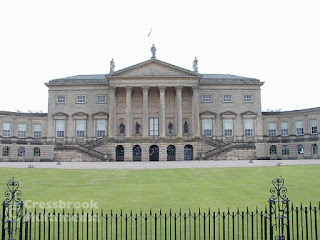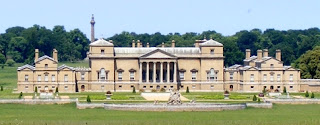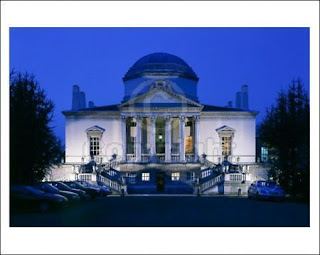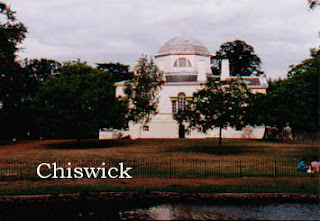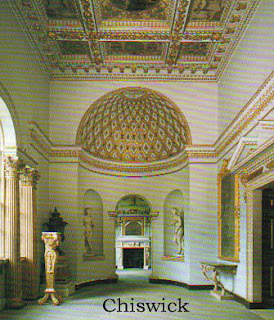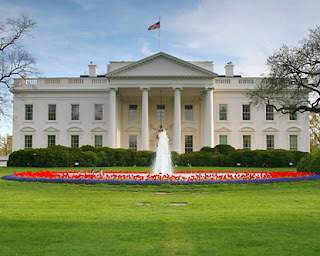| Chiswick House, London
Chiswick House is one of the most influential buildings in the history of British architecture. It re-introduced the Palladian style of neo-classicism and had a lasting effect on the future of buildings in Europe and the Americas.
To reiterate just a little from the previous post on Chiswick, the youthful Richard Boyle, Lord Burlington (1694-1753), together with a group of powerful and/or brilliant gentlemen and artists, created a magnificent villa based on the ideas and structures of Andrea Palladio (1508-1580), an Italian Renaissance architect.
The beauty of the house is in its symmetry, its proportions. Geometric shapes, circles, squares, octagons, all combine to create perfect balance. Based on the principles of ancient Greek architecture as reinterpreted by the Romans and Renaissance Italians, it is a pleasingly human scale which brings comfort and satisfaction in merely looking at the plans.
Each room flows from the central saloon under the shallow dome, one into another without barriers. The cornices and wall or ceiling paintings are the main decoration. Furniture was minimal and rearranged for specific purposes, as was usual in the days of many servants. Some rooms were used by Lord Burlington as a gallery for his collection of paintings.
The villa was constructed in 1727-29 to provide offices, galleries and areas for entertaining attached to another, older house. Burlington himself took credit for the architecture though he was ably assisted by others, particularly the painter William Kent who evolved into a major influence on architectural design in buildings, interiors and in gardens.
The lower, ground level held offices and the library. The Piano Nobile, the main floor, reached from outside stairways via a Corinthian portico, was designed almost exclusively for social gatherings.
 The gardens were recently redesigned and refurbished with nearly ten million pounds from the Heritage Lottery Fund. About 1,600 trees were planted and a cafe added for the convenience of visitors. The gardens were recently redesigned and refurbished with nearly ten million pounds from the Heritage Lottery Fund. About 1,600 trees were planted and a cafe added for the convenience of visitors.![]() The gardens, originally designed by William Kent, were widely admired and visited by Europeans and Americans as well as admiring British gentleman. Thomas Jefferson was one of the visitors who confessed he preferred a more natural design for his own gardens. Kent’s gardens, with their classical symmetry and use of water features and obelisks and temples as focal points for the layout, began the English Landscape Garden style which fully flowered in the work of designers such as Lancelot “Capability” Brown and Humphrey Repton. The gardens, originally designed by William Kent, were widely admired and visited by Europeans and Americans as well as admiring British gentleman. Thomas Jefferson was one of the visitors who confessed he preferred a more natural design for his own gardens. Kent’s gardens, with their classical symmetry and use of water features and obelisks and temples as focal points for the layout, began the English Landscape Garden style which fully flowered in the work of designers such as Lancelot “Capability” Brown and Humphrey Repton.The influence of the Palladian style, growing out of the work of Inigo Jones, then Burlington and Kent, Campbell and many others, was ascendent in the 18th century. Here is a brief gallery of some examples of neo-classic houses as they were built or remodeled between 1740 and 1800.
|


